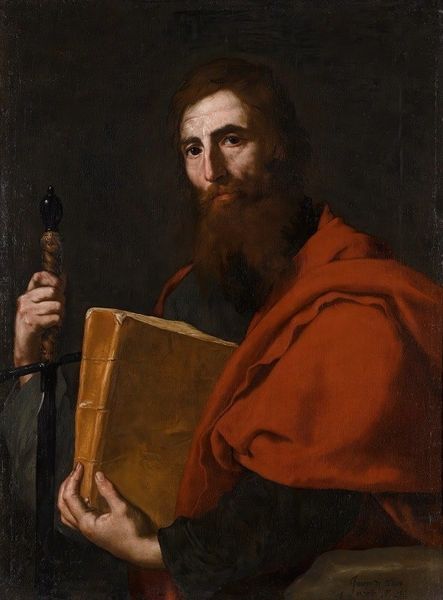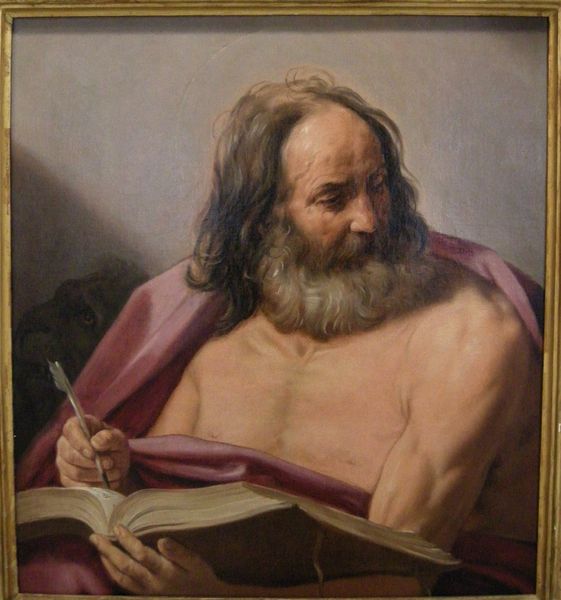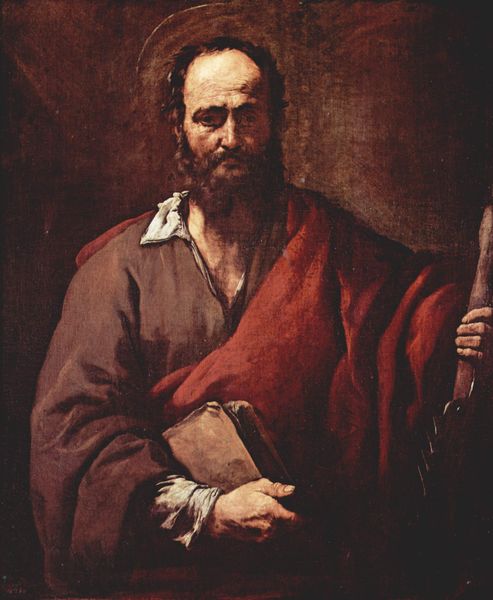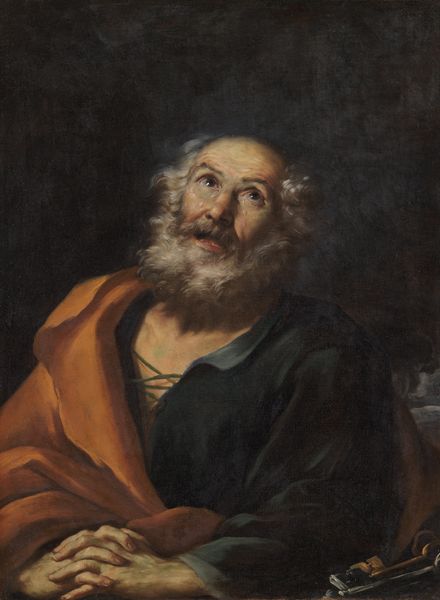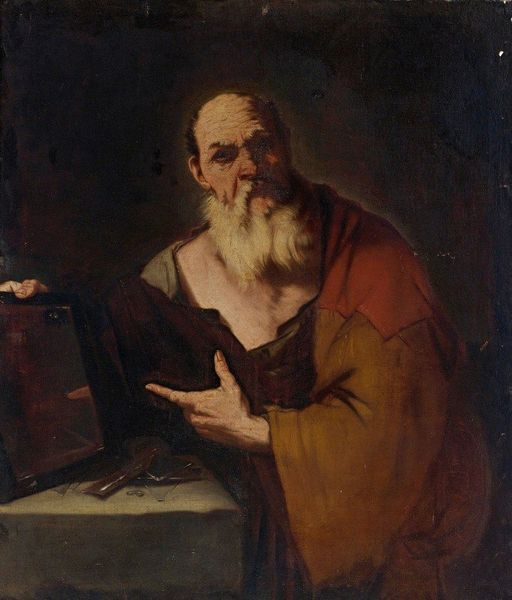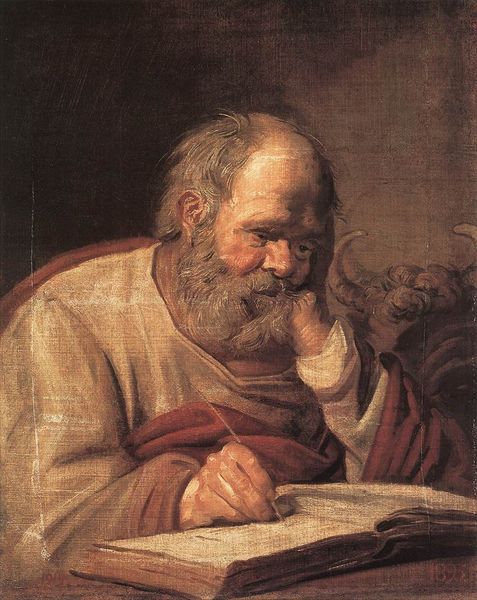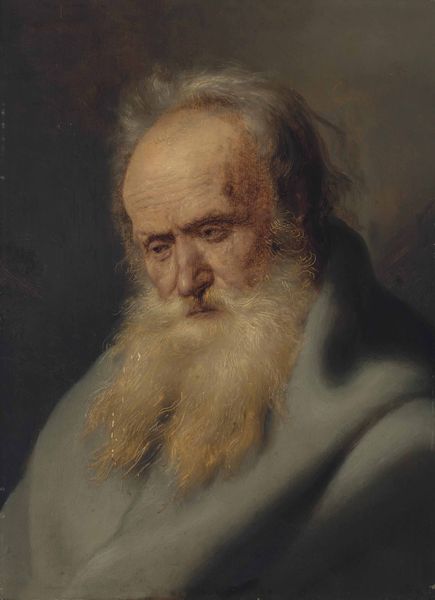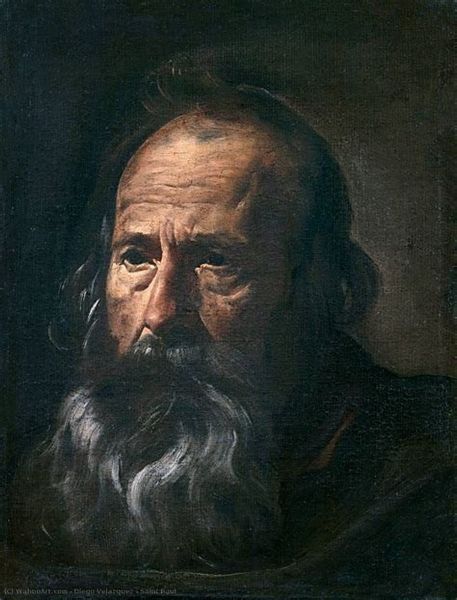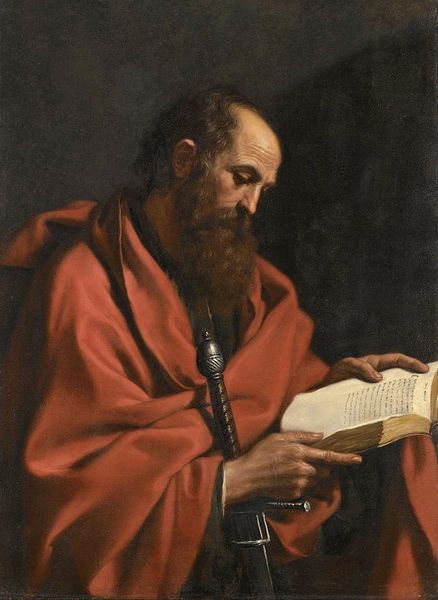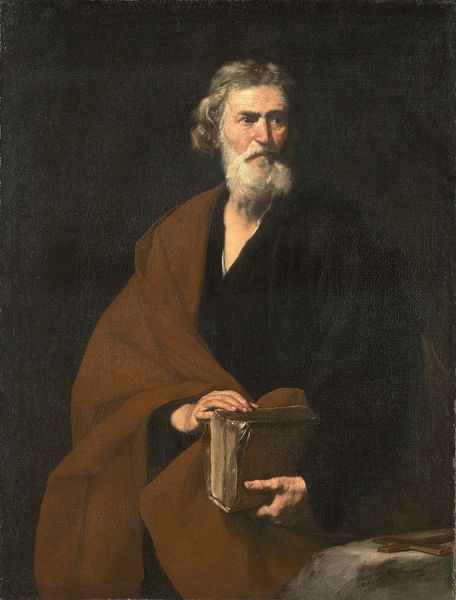
painting, oil-paint
#
portrait
#
baroque
#
portrait
#
painting
#
oil-paint
#
chiaroscuro
#
history-painting
#
realism
Copyright: Public Domain: Artvee
Editor: This is Guercino's *Saint Luke*, painted in 1631 with oil. The aged face emerges from this deep shadowy background, intently reading. I'm curious, what layers of symbolism are present in this baroque painting? Curator: The shadows are certainly evocative. Guercino presents St. Luke bathed in divine light, his gaze fixed on scripture. Consider the act of reading itself. What might it symbolize, especially for Luke, traditionally considered the author of one of the Gospels? Editor: Hmmm, I guess reading embodies knowledge, wisdom, and a connection to sacred texts. Like the artist wants to present a connection between human intellect and the divine? Curator: Precisely. Note the soft light – not harsh, but revealing. This represents a type of illumination. Luke's wisdom is accessible to those who seek knowledge, offering comfort and understanding rather than rigid dogma. Notice, too, the very visible aging. What could this represent? Editor: Maybe it stands for experience? As if to suggest that true wisdom comes from enduring hardships. Also, he is holding the writing rather close, perhaps intimating he has earned the right to decipher and document what it contains. Curator: Well observed. Guercino seems to remind us that figures like St. Luke were both divinely inspired and fundamentally human, aging and reflective. And the wrinkles serve to indicate just how old these ideas might be and still present. The weight of history and devotion are held in the lines upon his face. Editor: It’s like Guercino uses age, light, and literacy as metaphors. Thanks, I’m seeing how interconnected these symbols are. Curator: Yes, the human experience embedded within divine stories resonates powerfully when rendered in visual form.
Comments
No comments
Be the first to comment and join the conversation on the ultimate creative platform.

